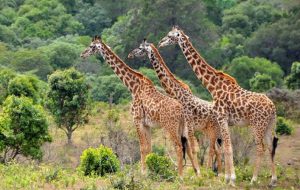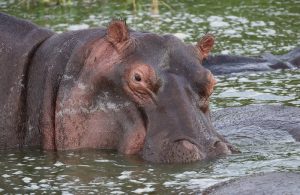The Importance of Eco-Friendly Safaris
Overview
The Importance of Eco-Friendly Safaris. As the popularity of safaris grows, so does the responsibility to ensure that tourism doesn’t harm the environment or wildlife. Eco-friendly safaris have become more than just a trend; they are a necessity for conserving Africa’s precious ecosystems. we’ll explore the importance of eco-friendly safaris and how responsible travel can directly contribute to wildlife conservation and community support.
1. The Threats Facing Africa’s Wildlife
Africa’s wildlife faces numerous threats, from poaching and habitat loss to climate change. The growing demand for agricultural land and infrastructure development is shrinking natural habitats. Poaching for ivory, bushmeat, and exotic pets continues to decimate populations of elephants, rhinos, and other vulnerable species.
Responsible tourism has emerged as a crucial ally in the fight to protect these species. By prioritizing eco-friendly safaris, tourists can help generate the funds needed to support conservation projects, anti-poaching efforts, and the maintenance of protected areas.
2. What Makes a Safari Eco-Friendly?
An eco-friendly safari goes beyond simply visiting national parks; it involves minimizing your environmental footprint and supporting conservation-focused initiatives. Key elements of an eco-friendly safari include:
- Low-impact accommodation: Many lodges and camps are designed to blend seamlessly into their natural surroundings. They use sustainable materials, renewable energy (solar power), and eco-friendly waste management systems.
- Wildlife-friendly practices: Eco-friendly lodges and tour operators follow strict guidelines that ensure minimal disruption to wildlife. For instance, game drives should respect animal behavior and avoid getting too close to wildlife, reducing stress on the animals.
- Support for local communities: Many eco-lodges employ people from nearby villages, ensuring that local communities benefit directly from tourism. Some also fund community projects, such as education and healthcare, which helps strengthen the relationship between conservation efforts and local residents.
3. The Role of National Parks and Private Reserves
National parks like Serengeti, Maasai Mara, and Kruger are vital for wildlife conservation. Tourism fees from these parks provide much-needed funding for anti-poaching patrols, habitat protection, and scientific research. Private reserves also play an essential role by creating buffer zones that reduce human-wildlife conflict and offer a more personalized safari experience with fewer visitors.
Private reserves often focus on protecting endangered species, with some running breeding and rewilding programs. These reserves tend to have stricter visitor limits and offer exclusive, low-impact safari experiences that minimize environmental disruption.
4. Conservation Safaris: Direct Involvement in Wildlife Protection
One of the most impactful ways to contribute to conservation is by joining a safari specifically designed to support wildlife protection. Many operators now offer “conservation safaris,” where part of your trip involves helping with conservation activities such as tracking animals, participating in anti-poaching patrols, or collecting data for research.
For instance, you can join a rhino conservation project in South Africa, where you’ll have the chance to assist with monitoring rhinos in the wild, learning about the efforts to save these endangered animals. Similarly, in Kenya, you can participate in lion tracking projects to better understand their movement patterns and contribute to predator conservation.
5. Supporting Community-Based Tourism
Local communities are key stakeholders in the success of wildlife conservation. If the benefits of conservation don’t reach nearby communities, poaching and habitat destruction can become alternatives for those struggling economically. Community-based tourism (CBT) initiatives ensure that the revenue from eco-friendly safaris is shared with local communities.
Some lodges are entirely owned by local tribes, such as the Maasai-owned camps in Kenya, where profits are reinvested into the community. By staying at these lodges or participating in cultural tours, you’re directly supporting community development while learning about indigenous cultures.
6. Minimizing Your Carbon Footprint on Safari
It’s important to remember that getting to East Africa or Southern Africa involves a significant carbon footprint due to long flights. However, there are ways to minimize your environmental impact during your safari:
- Carbon offsets: Many eco-lodges and tour operators offer carbon-offsetting options, where the carbon emissions from your flight and safari activities are calculated, and you can contribute to projects like reforestation or renewable energy programs to balance your carbon footprint.
- Choosing eco-lodges: Stay at lodges that use solar energy, harvest rainwater, and engage in reforestation programs. The best eco-lodges have a clear commitment to sustainability and often support wildlife conservation programs.
- Reduce single-use plastics: Bring your own reusable water bottle and avoid single-use plastics as much as possible. Many lodges provide filtered water stations to refill your bottles.
Conclusion
Eco-friendly safaris are not just a way to enjoy the beauty of Africa’s wildlife but also an essential part of the fight to protect endangered species and fragile ecosystems. By choosing responsible travel options, you’re contributing to conservation efforts, supporting local communities, and ensuring that future generations can experience the wonders of Africa. When planning your next safari, opt for operators and lodges committed to sustainability and conservation—it’s an investment in the future of our planet.




